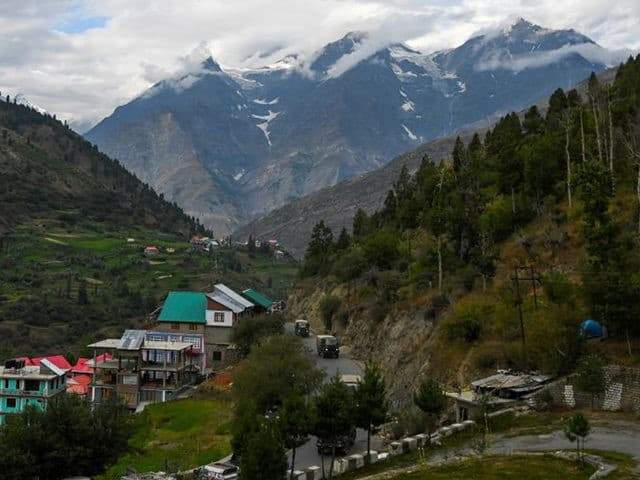Report: China Deploys 35 Tanks Along Himalayan Border with India

China recently deployed as many as 35 tanks to three separate locations along its unmarked Himalayan border with India, WION reported on Monday.
An estimated 30-35 Chinese tanks are stationed opposite three Indian military posts in the Rezang La and Rechin La mountain passes and near the Mukhosri area.
“The heights were captured by the Indian army on August 29 and 30 last year. The Chinese tanks are currently positioned against Indian positions,” according to WION, an Indian news site.
China’s People’s Liberation Army (PLA) deployed the “lightweight” tanks to the locations after the Indian Army deployed its own tanks to defend the strategic posts, located along the Line of Actual Control (LAC).
The LAC is India’s official name for its unmarked border with China. The two countries have been engaged in a standoff along the boundary since last summer when Chinese and Indian border troops clashed in a deadly skirmish in northern India’s Galwan Valley on June 15. The hand-to-hand combat killed 20 Indian troops and an estimated 40 Chinese soldiers. The Indian Army described the attack as an ambush by the PLA.
New Delhi and Beijing had accused each other of violating the status quo along the LAC in the weeks directly preceding the June 15 clash. Both nations’ militaries deployed troops and artillery equipment to the LAC in response to the allegations, setting the stage for the ongoing border standoff.
The June 15 skirmish sparked further military buildups along the LAC by both India and China in subsequent months. While the two countries’ foreign ministries have repeatedly tried to deescalate the border tension, Beijing and New Delhi continue to order more troops and military equipment to the LAC. The tension caused by the standoff has since spread beyond the western Himalayas to the two nations’ eastern border region, near Tibet.
China revealed to the public for the first time on Monday details of its “highest altitude” military post in Xigaze, located along its Tibetan border with India. The outpost is situated just north of India’s state of Sikkim, located between Nepal and Bhutan.
“In order to enhance border management, the People’s Liberation Army Tibet military command established the post in Xigaze in early 2020 at an altitude of 5,592 meters,” the Chinese state-run newspaper Global Times reported, quoting a broadcast byChina Central Television (CCTV).
“In a video shown by CCTV, the soldiers were having barbecue and lamb hot pot for dinner. According to the report, when the soldiers first came to the post, there was nothing but stone heaps and the temperature was minus 20,” the newspaper relayed.
The PLA contracted a border defense company in Kamba, Tibet, to man the outpost, according to the report. Li Xin, an instructor with the company, told CCTV of the military post, “We built this with spades and pickaxes and will defy death to defend it.”
“A soldier named Lu Zhouyang told CCTV that they only had shelter behind a big stone at the beginning. But things are getting much better now, as there is running water and roads are being built, he said,” according to the Global Times.
Photo: MONEY SHARMA/AFP via Getty Images
Link: https://www.breitbart.com/asia/2021/01/05/report-china-deploys-35-tanks-along-himalayan-border-with-india/#




